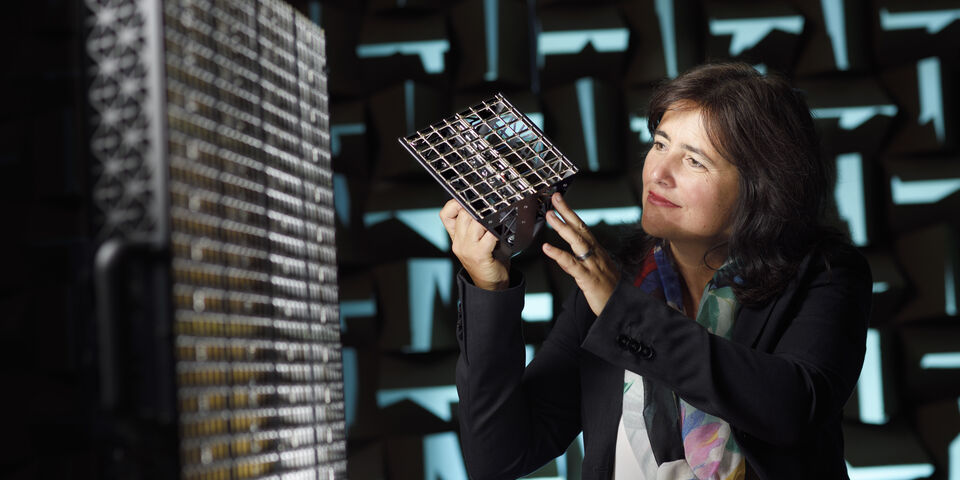Science of Sound
Since this spring Ines Lopez Arteaga has been the first female professor in the history of the TU/e Department of Mechanical Engineering. The Spanish lady is a sound expert with a mission: the world must get rid of noise nuisance. For this purpose she is prepared to look beyond the limits of her own field of expertise.
Ines Lopez Arteaga has dealt with many highly varied projects in her scientific career - from machinery that breaks up through its own vibrations to screeching train wheels, silent driver’s cabs in trucks and optimum macadam for motorways. Yet they clearly all have one thing in common: mechanical vibrations and the noise nuisance accompanying it. And this subject concerns everybody, she thinks. After all, noise nuisance can cause heart complaints, high blood pressure, and learning problems. “Expectations are that noise nuisance will in 2020 cause more lost healthy life years than any other form of environmental nuisance; even more than air pollution.”
After having obtained her PhD Lopez came to the Netherlands for a project involving DAF Trucks, in 2001. There she conducted research in which sound sources are made ‘visible’ by means of several microphones - TU/e also started with this during that same period. In 2009 this resulted in the spin-off Sorama, which develops sophisticated 3D sound cameras with thousands of microphones. Rick Scholte, who founded Sorama, was Lopez’s first doctoral candidate and Lopez is affiliated with this company as technical adviser.
Above 40 km per hour wheels make more noise than the engine
When one thinks of noise nuisance, traffic is usually the first thing that comes to mind. It can be no surprise, then, that the Spanish professor has been focusing for many years on the noise made by car wheels on various types of road surface. “When a tire rolls across a rough surface, it begins to vibrate”, Lopez explains. Those vibrations are transferred to the air and, given the right frequencies, this produces an audible sound. “The annoying factor here is that the space between the front of the wheel and the road functions like a kind of horn which amplifies the sound up to as many as twenty decibels.” That effect subsequently leads to the wheels producing more sound on macadam than the car engines at speeds above around forty kilometers per hour. “Only above a speed of 120 to 130 km/h do the air vortices around the contours of the car produce even more noise.”
Lopez is also professor at the KTH in Stockholm, where she has a new experimental setup that enables her to measure on the longitudinal scale of the tire profile how the frictional forces vary with different kinds of road surface. “Those may be small effects, but rolling resistance is the chief form of friction for cars up to some 90 km/h. If you can design the road surface in such a way that the rolling resistance is just a bit lower, and you multiply that by the many millions of cars, this will have a serious impact on the environment.”
As far as noise nuisance is concerned, there is a lot to be gained by cooperating with other disciplines, says Lopez. “That is why I am working together with Maarten Hornikx from Building Acoustics, Berry Eggen from Industrial Design and Armin Kohlrausch from Human-Technology Interaction. Jointly we also deliver the series of lectures entitled Science of Sound and Music. I find it important to bridge the hard technical side of acoustics and the soft, human side. My ambition is to link sound as people experience it with the mathematical models, so that we can design machines that make a better sound, rather than just less noise. You can even fantasize about hospitals where the ambient noise contributes to the healing process. Surely that would be fantastic?”


Discussion